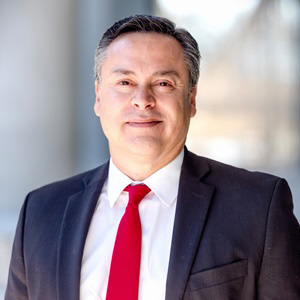Each year more than 20,000 young people age out of foster care in the United States, often with no safety net and little financial education. The National Foster Youth Institute says one in five of these young adults experiences homelessness within a year of leaving care, and fewer than half are employed by age 24. Without intervention, these youth are more vulnerable to housing insecurity, predatory lending, and long-term financial instability than the rest of their peers.
Mountain America Federal Credit Union ($21.5B, Sandy, UT) and Capitol Credit Union ($220M, Austin, TX) have each found their own way to step up on behalf of this population. Although different in execution, both programs focus on the same goal: Give foster youth the tools, guidance, and confidence to thrive on their own.
Banking On A Better Start

The inspiration for Capitol’s work with foster youth came three years ago when CEO Pierre Cardenas was invited to a ceremony honoring former foster youth who had graduated from college.
“I decided that if we want to do good and really have an impact, we should focus all our resources and attention on one cause we can all agree on,” the CEO says.
The credit union connected with the Texas Department of Family and Protective Services (DFPS) around the time
“Anyone under the age of 18 is not liable for anything,” Cardenas says. “If you give a 16-year-old with no parents an account and anything goes wrong, it’s just a loss to the financial institution. So, as far as finding partners, there were no takers on it.”
But credit unions are known for saying yes when others say no. CCU told the state it would explore options and see what it could do.
CU QUICK FACTS
CAPITOL CREDIT UNION
HQ: AUSTIN, TX
ASSETS: $220M
MEMBERS: 13,403
BRANCHES: 3
EMPLOYEES: 48
NET WORTH: 12.24%
ROA: 0.34%
“I didn’t realize how hard this was going to be,” Cardenas admits.
CCU spent more than a year engineering its PAL (Preparation for Adult Living) program. The result is a three-tiered account with built-in safeguards and financial education embedded directly into the mobile app.
- Tier 1: Youth open a savings account, receive $25 from the credit union, and earn another $25 by completing educational modules. Accountholders have an ATM card and access to a mobile banking app, but no checking privileges.
- Tier 2: After demonstrating responsible behavior over a period of at least six months, they graduate to a limited checking account with tight withdrawal limits and no remote deposit capture.
- Tier 3: As users enter adulthood and reach age 18, they can access broader services, including a fractional investment option that allows them to buy small amounts of stock.
DFPS monitors account balances for those who receive supplemental security income, so CCU added custom disclosures and worked with attorneys to design a secure but flexible system. Cardenas also appointed credit union staff members to serve as mentors. Calls related to these youth accounts route directly to a PAL team member, so those members always have access to the guidance, support, and practical advice.
The credit union estimates approximately 150 to 200 of these accounts are currently in use.
“We might be a tiny credit union in a market full of behemoths, but that doesn’t mean our impact has to be small,” Cardenas says.
A Hand Up, Not A Handout
The Mountain America Foundation, the charitable arm of Mountain America FCU, is dedicated to improving the education, health, and wellbeing of youth and families across its communities. Working with the Milestone Home, a transitional housing program for adults aging out of foster care, was a natural fit.
![Suzanne Oliver, VP of Government Affairs & Mountain America Foundation, MAFCU.]](https://creditunions.com/wp-content/uploads/2025/09/SuzanneOliver_MountainAmerica_Edited.jpg)
Suzanne Oliver, the Utah cooperative’s vice president of government affairs and the Mountain America Foundation, says it’s about more than just housing.
“These youth also need resources, guidance, and mentoring,” she says. “Most of us can call a parent, grandparent, or relative for advice, but these youth need trusted adults to fill that role.”
The opportunity began when a former Sandy city council member approached Mountain America leadership about a property that had been donated to use as the home. The property needed serious renovations, so the foundation supplied $50,000 in grant funding while local contractors donated labor. Together they rebuilt the kitchen and main floor, installed new windows, and transformed the house into a welcoming home.
Oliver was touched by the residents’ stories.
“Some had been living in a car or bouncing between friends,” she says. “The relief they felt to be safe and to have their own room — sometimes for the first time — was powerful. It was emotional to be involved.”.
CU QUICK FACTS
MOUNTAIN AMERICA FCU
HQ: SANDY, UT
ASSETS: $ 21.5B
MEMBERS: 1,359,410
BRANCHES: 103
EMPLOYEES: 3,562
NET WORTH: 9.41%
ROA: 0.78%
Residents typically stay six to nine months. To practice budgeting and paying bills, residents pay a modest monthly rent of approximately $200 per month for the first three months; after that, rent increases by $50 each quarter. If funds remain at the end of their stay, the money helps with their move to permanent housing. A full support team is available to residents, including case managers and a therapist. Salt Lake County reports a 70%-80% success rate with participants achieving self-sufficiency after completing the program.
Looking ahead, Oliver hopes to expand the Mountain America Foundation’s involvement to include more financial wellness services.
“We’ve provided financial literacy to older teens in foster care before, and I want to follow up on offering it to Milestone participants,” she says. “It’s about getting them set up and started off well.”
Oliver emphasizes that none of this would be possible without the intentional, combined effort between public and private entities.
“It really was synergy,” she says. “The whole being greater than the sum of the parts.”
Local leaders hope the Milestone Home will eventually serve as a model for other communities nationwide.